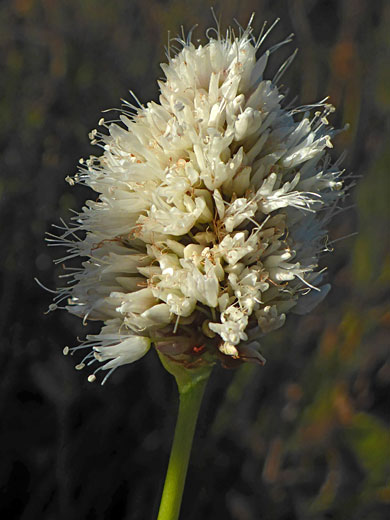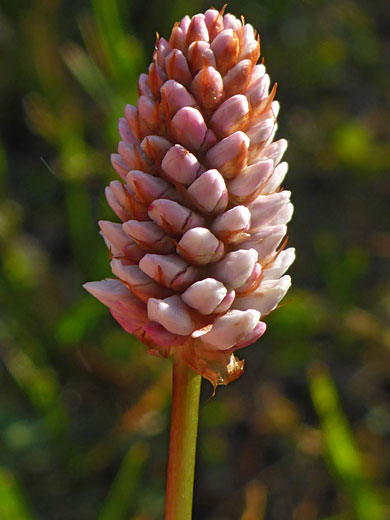Common names:
American bistort, Western bistort, knotweed
Family:
Scientific name:
Bistorta bistortoides
Synonym:
Polygonum bistortoides
Main flower color:
Range:
From the Pacific states to the Rocky Mountains
Height:
Up to 28 inches
Habitat:
Meadows, streambanks, forest margins, tundra; 4,300 to 12,500 feet
Leaves:
Lanceolate, between 4 and 8 inches long; mostly basal
Season:
May to August
Bistorta bistortoides is one of the commonest and most widespread wildflowers of the western mountains, growing in moist, open environments from Canada south to California, Arizona and New Mexico. Favorable conditions lead to the plant colonising large areas. The broad, lanceolate leaves grow mostly around the base of the unbranched reddish green stems, which are topped by a spherical or somewhat elongated cluster of small, white or pale pink flowers. Individual flowers have five oblong tepals, just a few mm long, and a center of protruding white stamens. Flowers grow from thick rhizomes, which were used for food by Native Americans, either cooked directly or ground to make flour. Buds are often pinkish in color.
All Contents © Copyright The American Southwest | Comments and Questions | Contribute | Site Map









